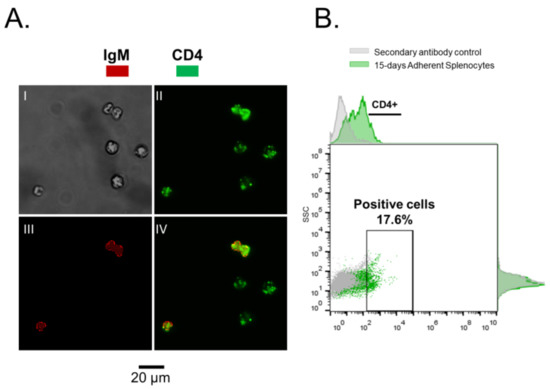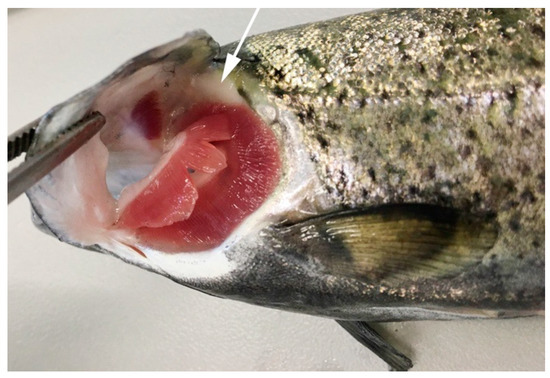Fish Immunity: From Genomes to Functional Understanding
A topical collection in Biology (ISSN 2079-7737).
Viewed by 17828
Share This Topical Collection
Editor
Topical Collection Information
Dear Colleagues,
Fish immunology is an area of study which is critical for the modern world. Due to the fact that capture fisheries peaked in production 20 years ago, today, more than 50% of the fish consumed worldwide are now produced by aquaculture. In addition, climate change and pollution threaten wild fish populations around the globe. Finally, fish are a diverse group of organisms that have invaded a multitude of niches in both fresh and salt water and thus have developed many unique mechanisms and adaptations that, although based on the same cells and molecules as sharks and tetrapods, produce immune systems that work in unique ways that inform us about the basic principles and evolution of immunity in general.
Fish immunology is at a very intriguing point as a science. Thanks to genomic studies, we now have a framework of knowledge that can inform our experiments into how fish immune systems work, and many labs around the world are developing the cellular and molecular tools that will provide clear answers to the question of how fish immune proteins and cells work. This collection will be home for studies that fit all along that spectrum.
Prof. Dr. Brian Dixon
Guest Editor
Manuscript Submission Information
Manuscripts should be submitted online at www.mdpi.com by registering and logging in to this website. Once you are registered, click here to go to the submission form. Manuscripts can be submitted until the deadline. All submissions that pass pre-check are peer-reviewed. Accepted papers will be published continuously in the journal (as soon as accepted) and will be listed together on the collection website. Research articles, review articles as well as short communications are invited. For planned papers, a title and short abstract (about 100 words) can be sent to the Editorial Office for announcement on this website.
Submitted manuscripts should not have been published previously, nor be under consideration for publication elsewhere (except conference proceedings papers). All manuscripts are thoroughly refereed through a single-blind peer-review process. A guide for authors and other relevant information for submission of manuscripts is available on the Instructions for Authors page. Biology is an international peer-reviewed open access monthly journal published by MDPI.
Please visit the Instructions for Authors page before submitting a manuscript.
The Article Processing Charge (APC) for publication in this open access journal is 2700 CHF (Swiss Francs).
Submitted papers should be well formatted and use good English. Authors may use MDPI's
English editing service prior to publication or during author revisions.
Keywords
- teleost
- shark
- fish
- immunology
- cell
- cytokine
- immunoglobulin
- receptor
- innate immunity
- adaptive immunity
Published Papers (3 papers)
Open AccessCommunication
Induction of foxp3 during the Crosstalk between Antigen Presenting Like-Cells MHCII+CD83+ and Splenocytes CD4+IgM− in Rainbow Trout
by
Byron Morales-Lange, Ivan Nombela, María Del Mar Ortega-Villaizán, Mónica Imarai, Paulina Schmitt and Luis Mercado
Cited by 8 | Viewed by 3170
Abstract
In fish, the spleen is one of the major immune organs in the animal, and the splenocytes could play a key role in the activation and modulation of the immune response, both innate and adaptive. However, the crosstalk between different types of immune
[...] Read more.
In fish, the spleen is one of the major immune organs in the animal, and the splenocytes could play a key role in the activation and modulation of the immune response, both innate and adaptive. However, the crosstalk between different types of immune cells in the spleen has been poorly understood. In this work, an in vitro strategy is carried out to obtain and characterize mononuclear splenocytes from rainbow trout, using biomarkers associated with lymphocytes (CD4 and IgM) and antigen-presenting cells (CD83 and MHC II). Using these splenocytes, co-cultures of 24 and 48 h are used to determine the gene expression of master transcriptional factors that coordinate the polarization of T cells (
t-bet,
gata3, and
foxp3). The results show a proportional upregulation of
foxp3 (compared to
t-bet and
gata3) in co-cultures (at 24 h) of IFNγ-induced splenocytes with and without stimulation of
Piscirickettsia salmonis proteins. In addition,
foxp3 upregulation was established in co-cultures with IFNγ-induced cells and in cells only stimulated previously with
P. salmonis proteins at 48 h of co-culture. These results show a potential communication between antigen-presenting-like cells and lymphocyte in the spleen, which could be induced towards a Treg phenotype.
Full article
►▼
Show Figures
Open AccessReview
Revisiting the Teleost Thymus: Current Knowledge and Future Perspectives
by
Felipe Barraza, Ruth Montero, Valentina Wong-Benito, Héctor Valenzuela, Carlos Godoy-Guzmán, Fanny Guzmán, Bernd Köllner, Tiehui Wang, Christopher J. Secombes, Kevin Maisey and Mónica Imarai
Cited by 20 | Viewed by 6671
Abstract
The thymus in vertebrates plays a critical role in producing functionally competent T-lymphocytes. Phylogenetically, the thymus emerges early during evolution in jawed cartilaginous fish, and it is usually a bilateral organ placed subcutaneously at the dorsal commissure of the operculum. In this review,
[...] Read more.
The thymus in vertebrates plays a critical role in producing functionally competent T-lymphocytes. Phylogenetically, the thymus emerges early during evolution in jawed cartilaginous fish, and it is usually a bilateral organ placed subcutaneously at the dorsal commissure of the operculum. In this review, we summarize the current understanding of the thymus localization, histology studies, cell composition, and function in teleost fishes. Furthermore, we consider environmental factors that affect thymus development, such as seasonal changes, photoperiod, water temperature fluctuations and hormones. Further analysis of the thymus cell distribution and function will help us understand how key stages for developing functional T cells occur in fish, and how thymus dynamics can be modulated by external factors like photoperiod. Overall, the information presented here helps identify the knowledge gaps and future steps needed for a better understanding of the immunobiology of fish thymus.
Full article
►▼
Show Figures
Open AccessReview
Antimicrobial Peptides of Salmonid Fish: From Form to Function
by
Sascha R. Brunner, Joseph F. A. Varga and Brian Dixon
Cited by 36 | Viewed by 5999
Abstract
Antimicrobial peptides (AMPs) are small, usually cationic, and amphiphilic molecules that play a crucial role in molecular and cellular host defense against pathogens, tissue damage, and infection. AMPs are present in all metazoans and several have been discovered in teleosts. Some teleosts, such
[...] Read more.
Antimicrobial peptides (AMPs) are small, usually cationic, and amphiphilic molecules that play a crucial role in molecular and cellular host defense against pathogens, tissue damage, and infection. AMPs are present in all metazoans and several have been discovered in teleosts. Some teleosts, such as salmonids, have undergone whole genome duplication events and retained a diverse AMP repertoire. Salmonid AMPs have also been shown to possess diverse and potent antibacterial, antiviral, and antiparasitic activity and are induced by a variety of factors, including dietary components and specific molecules also known as pathogen-associated molecular patterns (PAMPs), which may activate downstream signals to initiate transcription of AMP genes. Moreover, a multitude of cell lines have been established from various salmonid species, making it possible to study host-pathogen interactions in vitro, and several of these cell lines have been shown to express various AMPs. In this review, the structure, function, transcriptional regulation, and immunomodulatory role of salmonid AMPs are highlighted in health and disease. It is important to characterize and understand how salmonid AMPs function as this may lead to a better understanding of host-pathogen interactions with implications for aquaculture and medicine.
Full article








